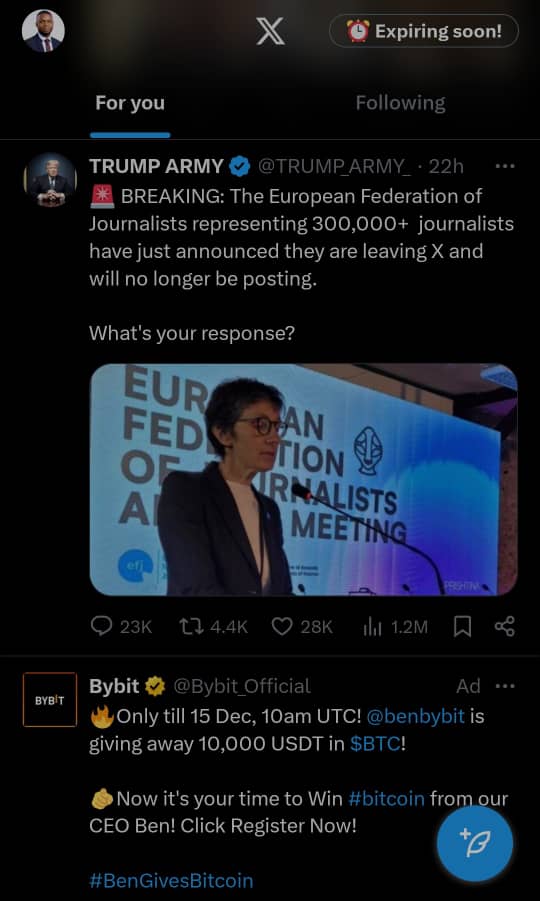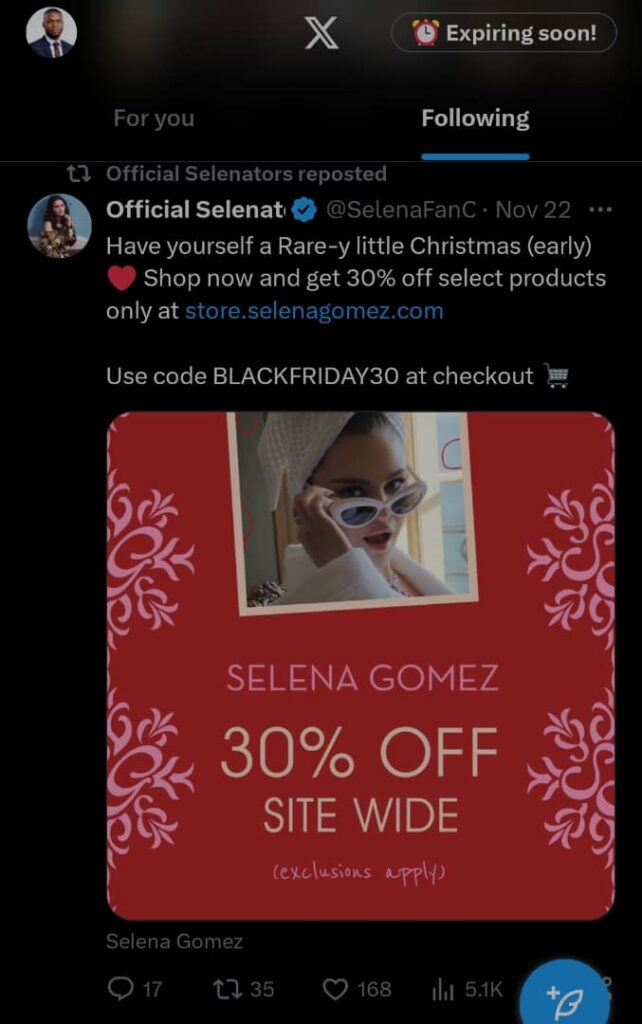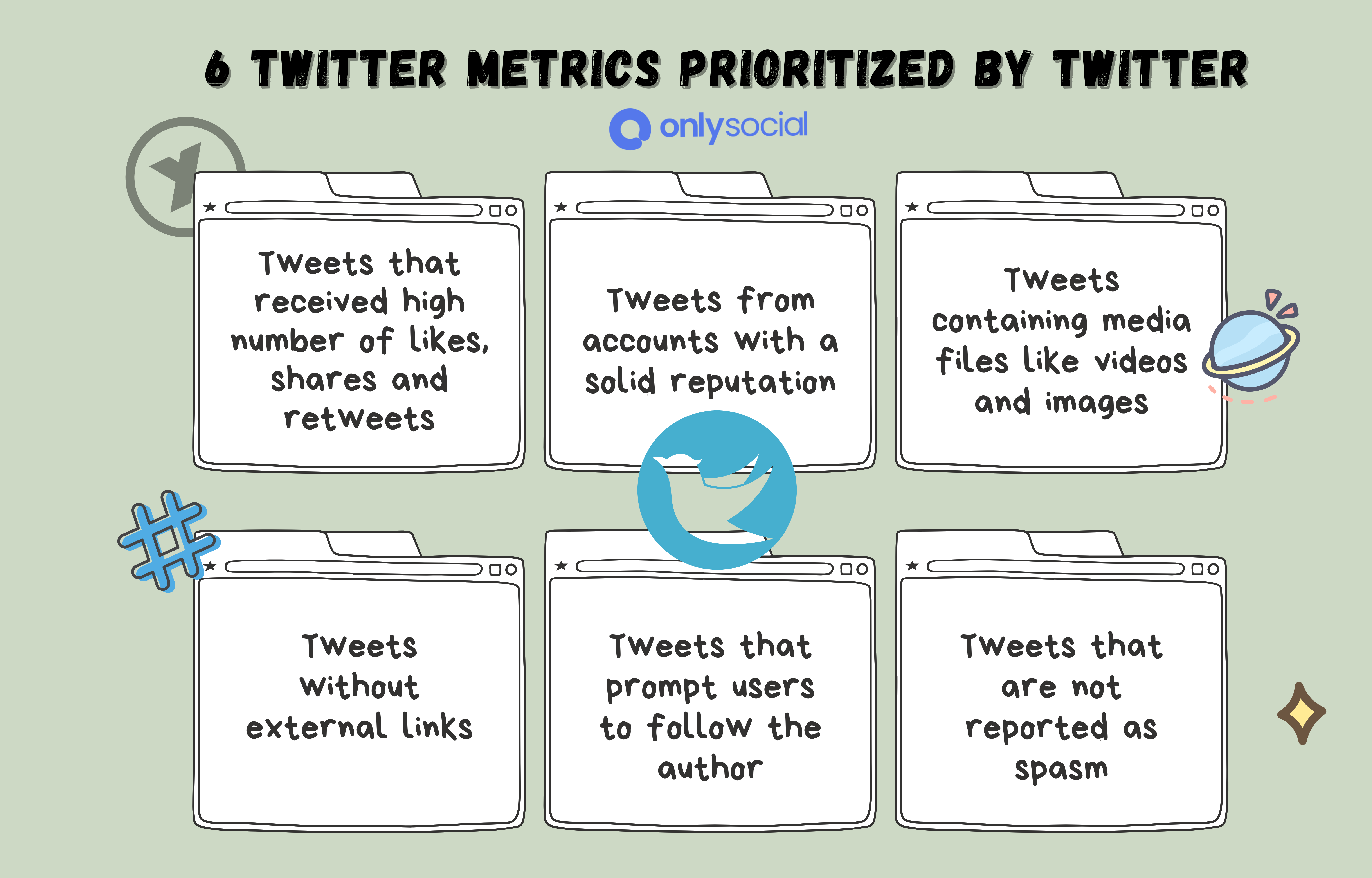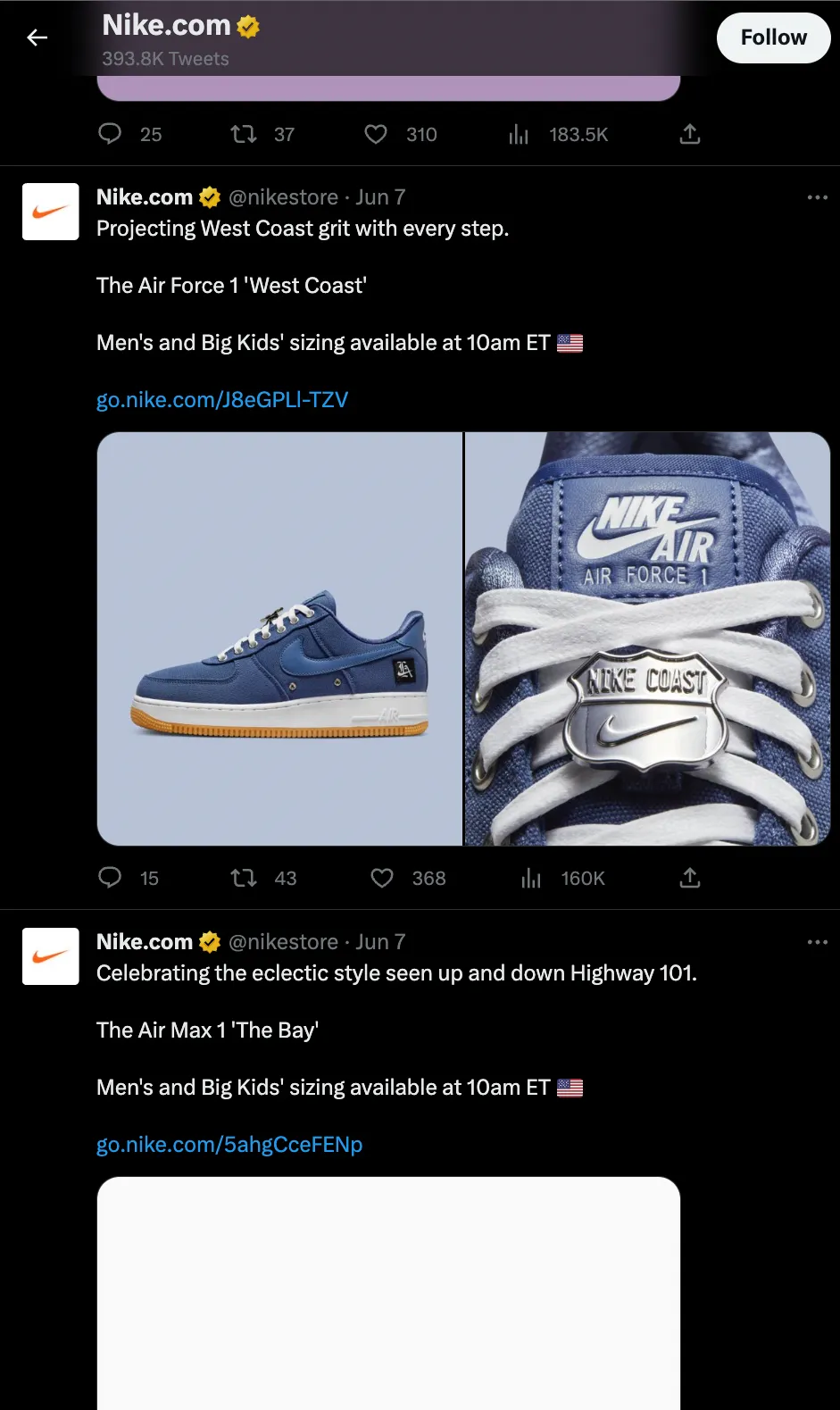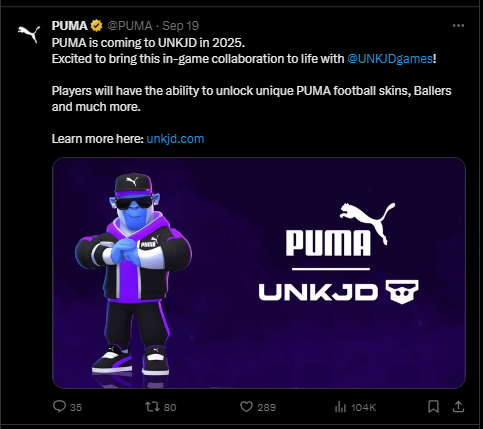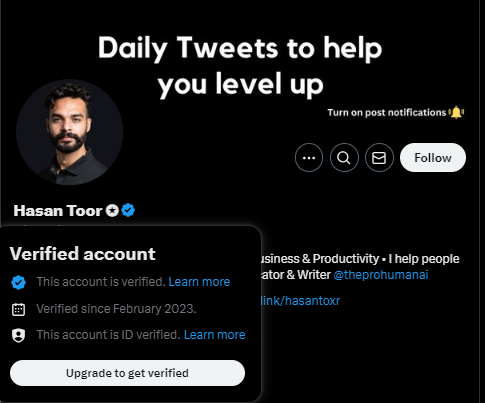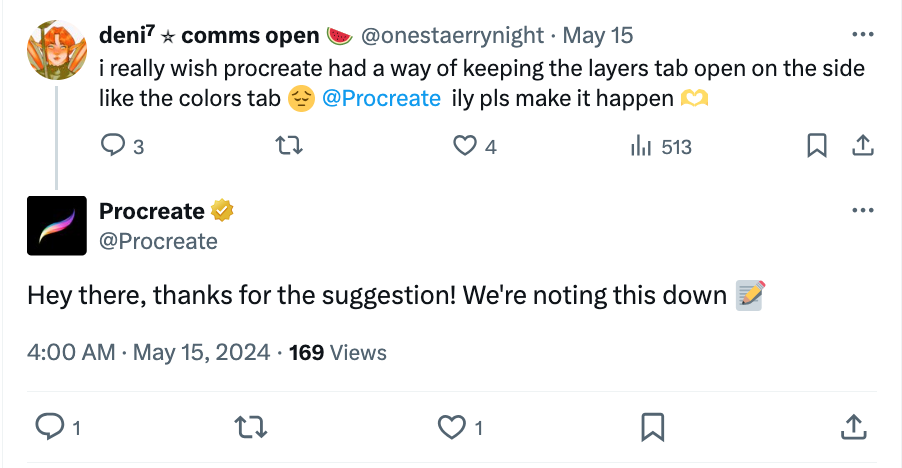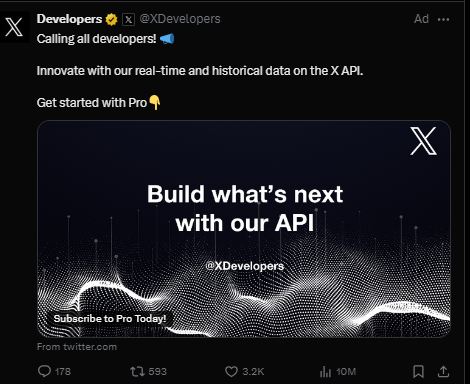How Does the Twitter Algorithm Work + 10 Tips to Leverage It
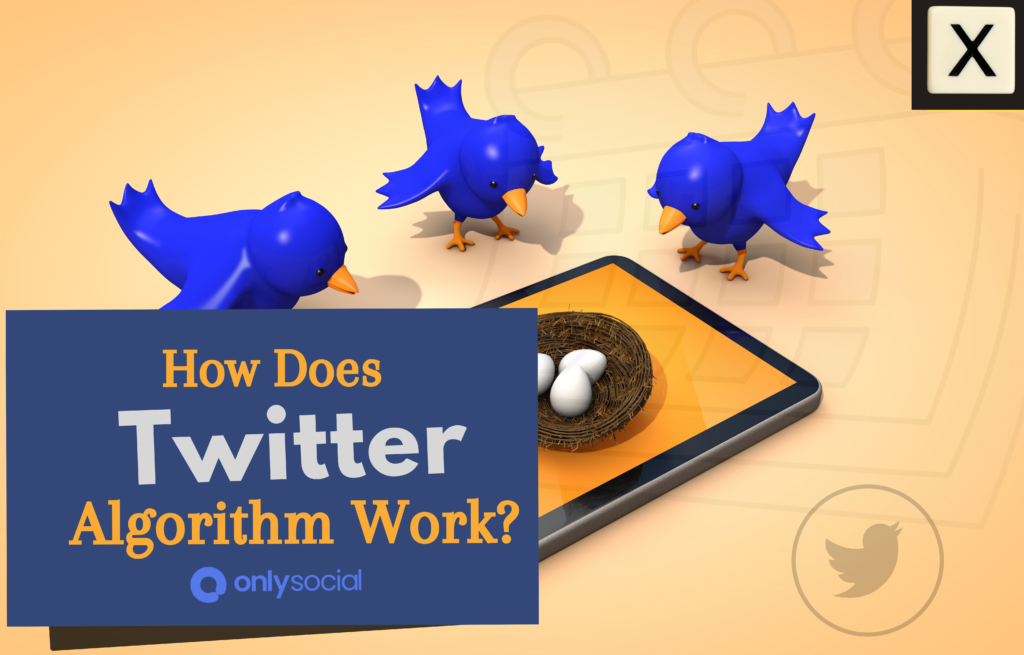
The Twitter algorithm (or X algorithm, if you’re keeping up with the rebrand) is a game-changer for anyone looking to grow on the platform.
Like all social media platforms, Twitter is constantly evolving – and so is its algorithm. From ranking content to reshaping how posts are discovered, it’s all about working smarter to stand out.
If you want your tweets to gain traction and your profile to thrive, you’ve got to play by the algorithm’s rules.
But don’t worry – It’s not as complicated as it sounds.
In this guide, we’ll break down how the Twitter algorithm works and share 10 actionable tips to help you leverage it like a pro.
If you are ready to maximize your engagement and get seen, then keep reading!
Table of Contents
- 1 What Is the Twitter (X) Algorithm?
- 2 How Has the Twitter (X) Algorithm Changed?
- 3 Understanding How the Twitter Algorithm Works in 2025
- 4 Top Twitter Algorithm Ranking Signals to Look For
- 5 How to Leverage Twitter Algorithm for Better Engagement
- 5.1 #1: Be Consistent
- 5.2 #2: Learn From What Works (and What Doesn’t)
- 5.3 #3: Know the Right Time to Tweet
- 5.4 #4: Choose the Right Content Types and Formats
- 5.5 #5: Get Your Account Verified
- 5.6 #6: Leverage Tweet Polls
- 5.7 #7: Respond Quickly to Replies
- 5.8 #8: Make Use of Tags
- 5.9 #9: Consider Running Twitter Ads
- 5.10 #10: Repurpose Top-Performing Content
- 5.11 #11: Leverage Analytics Data for Planning Content
- 5.12 #12: Join Relevant Trends
- 6 Final Words
What Is the Twitter (X) Algorithm?
The Twitter algorithm is like a digital matchmaker, deciding what content shows up in your feed. It uses machine learning to figure out what’s relevant, what’s popular, and what you’re likely to engage with.
The result? A personalized feed that keeps you scrolling.
But here’s the catch: this isn’t a simple “most recent post wins” setup. T
The algorithm is a constantly evolving, complex mix of factors designed to prioritize content that grabs attention. It doesn’t just look at likes and retweets – it analyzes what you click, comment on, or linger over.
For marketers, this means staying ahead of the algorithm is key to getting your content noticed.
If you want your tweets to thrive, you’ve got to understand how the algorithm works and adjust your strategy as it evolves.
But don’t worry, we’ll guide you through it all in this post. Let’s keep going!

How Has the Twitter (X) Algorithm Changed?
The Twitter (X) algorithm has come a long way from its early days.
Back in 2017, Twitter introduced the “relevance model,” replacing the chronological “While You Were Away” feature with the now-familiar “In Case You Missed It.”
This shift put relevance over recency, prioritizing tweets that matter most to users rather than just the latest posts.
Fast forward to today, and the Twitter algorithm has taken another exciting turn – it now shines a spotlight on smaller accounts. This change is a game-changer, leveling the playing field and giving newer voices a chance to be heard.
As someone who has worked with clients of all sizes, I’ve seen firsthand how this update helps smaller brands and creators break into conversations that were once dominated by big players. It’s refreshing and encourages more diversity in your timeline.
Here’s what else you should know:
- The algorithm never stops evolving. What works today might change tomorrow, so staying informed is crucial.
- Your feed is a mix of algorithmic and real-time content. You get the best of both worlds – trending tweets and up-to-the-minute updates.
- You can tweak your preferences. By adjusting your settings, you can influence how the algorithm works in your personal timeline.
These changes make Twitter more dynamic and accessible than ever.
Whether you’re a seasoned marketer or a new user, understanding these updates is the first step to leveraging the algorithm to your advantage.
Understanding How the Twitter Algorithm Works in 2025
If you’ve opened your Twitter (X) app recently, you’ve likely noticed its three distinct feeds:
- The ‘For You’ timeline
- The ‘Following’ timeline
- The Explore tab
Each works differently, and understanding their algorithms can help you maximize your reach and engagement. Let’s break it down.
How Twitter ‘For You’ Timeline Algorithm Works
The ‘For You’ timeline is where Twitter’s algorithm really shines. It’s a personalized mix of tweets from accounts you follow and recommendations from accounts you don’t.
But how does Twitter decide what to show here?
- Past interactions: It studies the tweets you’ve liked, commented on, or shared to predict what you’ll enjoy.
- Trending and popular content: It highlights what similar users are engaging with or what’s gaining traction across the platform.
- Relevance scoring: Each tweet is scored based on how likely you are to interact with it, ensuring your feed feels tailored and engaging.
If you want your tweets to appear here, focus on creating shareable, interactive content.
Building engagement signals like likes and retweets increases your chances of making it to more ‘For You’ feeds.
How Twitter’s ‘Following’ Timeline Algorithm Works
The ‘Following’ timeline is simple and straightforward. It displays tweets from the accounts you follow in reverse chronological order.
No bells and whistles – just a raw, real-time feed of what’s happening in your network.
This feed doesn’t rely heavily on algorithms, so if your audience primarily uses the ‘Following’ timeline, timing your tweets becomes crucial.
Posting consistently and during peak activity hours ensures your content doesn’t get buried.
How Twitter ‘Explore’ Tab Algorithm Works
The Explore tab is where discovery happens. It aggregates content from across the platform, helping you find what’s trending, what’s newsworthy, and what’s buzzing in entertainment, sports, and beyond.
Here’s how it works:
- Topic-based recommendations: It categorizes content into tabs like trending topics, personalized recommendations, and niche interests.
- Events and breaking news: The Explore tab surfaces live events and real-time updates to keep users informed.
- Tailored discovery: It also includes personalized ‘For You’ suggestions, similar to the main timeline but focused on new content.
By understanding how each feed operates, you can tailor your content to perform better across the platform.
Top Twitter Algorithm Ranking Signals to Look For
The Twitter (X) algorithm isn’t a mystery – it runs on specific ranking signals that decide whether your tweet becomes a viral hit or disappears into the void.
Let’s quickly run over some of the key factors you need to know to boost your visibility and engagement.
- Relevance
Relevance is the heart of the algorithm. It starts by analyzing your past behavior: who you follow, what you like, retweet, or reply to.
It’s like Twitter’s way of saying, “I see what you’re into – here’s more!”
Your location and the topics you tweet about also play a role. For example, if you’ve been tweeting about trending topics like AI or the latest football match, expect to see more of that in your feed.
Personally, I’ve noticed my timeline filling with similar content whenever I interact with a specific hashtag or account – it’s like Twitter’s listening (in a good way!).
- Recency
Even though the “For You” timeline doesn’t stick to a chronological order, fresh content still gets priority. The algorithm loves tweets about current events or trending topics because people crave updates.
When I’ve tweeted about breaking news or industry updates, I’ve noticed a significant spike in engagement compared to evergreen posts.
Timing is everything – be the first to join the conversation, and the algorithm will reward you.
- Engagement
Engagement is like Twitter gold. The more likes, replies, and retweets your post gets, the more valuable the algorithm considers it.
A tweet that sparks conversation is flagged as engaging, and engaging content is what Twitter loves to amplify.
Encourage replies, ask questions, and post content that your audience can’t resist sharing. In my experience, tweets that are interactive – like polls or questions – tend to perform much better in rankings.
- Account Credibility
Your account’s reputation matters. Verified accounts and profiles with a healthy follower-to-following ratio get a boost in visibility.
Consistency is key here – if you’re tweeting regularly and engaging positively with others, the algorithm sees you as credible.
On the flip side, accounts with a history of bans or spammy behavior won’t get much love from the algorithm.
Building a trustworthy profile takes time, but it’s worth it.
- Diversity
Twitter doesn’t want to trap you in an echo chamber. To keep things balanced, it diversifies your feed by mixing tweets from different accounts and perspectives.
This encourages open conversations and ensures your timeline isn’t just one-sided.
While this might mean your tweets face more competition, it’s also an opportunity to reach audiences who wouldn’t normally follow you.
- Type of Content
The algorithm is a sucker for rich media. Tweets with images, videos, GIFs, or polls are more likely to catch its eye.
Visuals naturally drive more engagement, so they’re scored higher and pushed to a broader audience.
Perhaps you have also noticed that whenever you include a compelling image or an eye-catching GIF, your tweets get more traction. It’s a simple but powerful way to stand out in a sea of text.
How to Leverage Twitter Algorithm for Better Engagement
#1: Be Consistent
Consistency isn’t just nice to have – it’s essential if you want to thrive on Twitter.
The algorithm rewards accounts that stay active and regularly share valuable content. So, if you’ve got something to tweet, don’t overthink it – post it!
Even tweets that don’t perform well can teach you something.
Aim to post at least once or twice a day, but no more than four to five times. This sweet spot keeps your audience engaged without overwhelming them.
Think about brands like Nike – they’re masters at consistency. From product announcements to motivational posts, they keep their followers hooked, and the algorithm takes notice.
If you’re only tweeting sporadically, your chances of landing on the Home section are slim. Tools like OnlySocial make it easier to plan and schedule your tweets in advance, so you’ll never miss a day.
Remember, consistency is your ticket to standing out in the Twitterverse.
#2: Learn From What Works (and What Doesn’t)
Not every tweet will be a hit – and that’s okay!
The key is to learn from your successes and failures. Tweets that perform well provide valuable insights: What tone did you use? What time did you post? Was it a question, a poll, or a witty one-liner?
On the flip side, tweets that flop are just as informative. They highlight what your audience isn’t interested in or what didn’t land as expected. Use this feedback to refine your content strategy.
Keep experimenting with formats, topics, and timing to find your rhythm.
#3: Know the Right Time to Tweet
Timing is everything on Twitter. Post at the wrong time, and even the best content can get lost in the noise.
To find the sweet spot, you’ll need to dig into your analytics. Study your audience’s activity patterns to see when they’re most likely to engage. Experiment with different posting times for about a month.
Tools like OnlySocial or SocialPilot can make this process easier by letting you schedule tweets across various time slots.
You might discover, for example, that lunch hours are a goldmine for engagement because users often scroll their feeds during breaks. Once you pinpoint your peak times, schedule your tweets accordingly to maximize visibility.
#4: Choose the Right Content Types and Formats
Great content isn’t just about what you say – it’s about how you say it. Twitter’s algorithm loves rich media, so mix things up with videos, GIFs, images, polls, and carousels.
These formats tend to grab attention and encourage interaction.
Look at the example below. Here is a tweet where Puma is announcing its interest in UNKJD games in the coming year. This makes the tweet more engaging than a text-only tweet.
Videos, in particular, are a powerhouse for engagement. Twitter data shows that four out of five user sessions include video viewing, so incorporating video into your strategy is a no-brainer.
Whether it’s a behind-the-scenes clip, a tutorial, or a quick product demo, videos can amplify your reach and keep your audience hooked.
#5: Get Your Account Verified
A verified account doesn’t just give you a shiny blue (or gold or gray) checkmark – it signals credibility. The Twitter algorithm favors verified accounts, making them more likely to appear in feeds and gain visibility.
Getting verified is straightforward: sign up for verification and pay the subscription fee ($8/month on the web, $11/month on iOS).
Beyond the algorithmic boost, verification comes with perks like text formatting, tweet editing, and fewer ads on the “For You” timeline.
Businesses can opt for a gold checkmark, while government officials can receive a gray one. Both enhance your account’s credibility and visibility, making it easier to navigate the algorithm and stand out from the crowd.
#6: Leverage Tweet Polls
Tweet polls are a hidden gem for boosting engagement on Twitter. By asking your audience a simple question and providing a few options, you’re inviting them to interact – and Twitter’s algorithm loves that.
Polls spark conversations, gather opinions, and give your followers a fun way to engage with your content. For example, asking something like “What’s your go-to productivity tool?” can generate responses while showcasing your brand’s personality.
Each vote or reply sends a signal to the algorithm that your content is relevant and engaging, which can lead to increased visibility.
Make polls a regular part of your content strategy to foster interaction and build stronger connections with your audience.
#7: Respond Quickly to Replies
Engagement doesn’t stop when you hit “tweet.” The Twitter algorithm prioritizes recent interactions, so responding quickly to replies, mentions, and reposts can work wonders for your visibility.
For the best results, aim to reply within the first 2–3 hours.
Whether someone tags your brand, comments on a post, or shares your content, your response keeps the conversation alive and encourages more interaction.
For instance:
- Thank users who repost your tweets.
- Respond thoughtfully to comments or questions.
- Acknowledge mentions, even if it’s just with a quick “thanks!”
Quick replies show your audience you’re active and attentive, and the algorithm rewards this engagement with better reach.
#8: Make Use of Tags
Hashtags and mentions are still relevant in 2025 – when used strategically.
Hashtags make your tweets discoverable to users interested in specific topics or events, while tagging relevant accounts can open up your content to their followers.
Focus on trending or niche hashtags that align with your content.
For example, if your tweet discusses AI trends, including #ArtificialIntelligence or #AI2025 can help it reach the right audience. Similarly, mentioning relevant accounts can spark conversations and attract new followers.
Be mindful, though – spamming hashtags or tags can backfire. Stick to a few well-chosen ones to keep your tweets clean and professional while maximizing their discoverability.
#9: Consider Running Twitter Ads
Struggling with organic reach? Twitter ads can give your content the extra visibility it needs, especially if you’re new to the platform.
Ads allow you to target specific audiences, amplify your tweets, and gain exposure far beyond your existing follower base.
For new businesses, Twitter ads are a fast-track way to build awareness and credibility. They’re also great for promoting key campaigns, products, or events.
With the algorithm favoring content that gains traction, ads can create a ripple effect, increasing your organic reach too.
#10: Repurpose Top-Performing Content
Got a tweet that went viral or performed exceptionally well? Don’t let it fade into the background. Repurpose that content to give it a second life.
Re-share your best tweets at strategic intervals, but don’t just copy and paste – add a fresh twist.
Update the stats, change the visuals, or tweak the wording to make it feel new. For instance, a tweet about a popular blog post can be re-shared with a new angle or an intriguing question.
This strategy leverages what you already know works, increasing your chances of generating more engagement without constantly reinventing the wheel.
#11: Leverage Analytics Data for Planning Content
Analytics are your secret weapon for understanding what resonates with your audience. Twitter Analytics provides insights into tweet performance, audience behavior, and trending topics.
Use this data to refine your strategy. For example, identify which tweets drive the most engagement and analyze why they performed well. Was it the timing, the tone, or the content type? Use those insights to replicate success in future posts.
Twitter Analytics can also help you discover trending hashtags and topics, so you can align your content with what’s currently buzzing on the platform.
#12: Join Relevant Trends
Jumping into trending conversations can skyrocket your engagement. Whether it’s a hashtag related to your industry or a broader cultural moment, joining the discussion makes your brand part of the story.
The key is relevance. Don’t just hop on any trend – find ones that align with your brand voice and audience interests.
Add value to the conversation by sharing insights, humor, or unique takes.
Engaging in timely trends increases the likelihood of your tweets being discovered by new audiences, giving you a boost in visibility and credibility.
Final Words
Mastering the Twitter algorithm isn’t about gaming the system – it’s about creating content that resonates and contributes positively to the platform.
This guide has equipped you with the tools and strategies you need to amplify your presence and build genuine connections.
At the heart of every successful tweet is a deep understanding of your audience. Take the time to know their preferences, and pair that knowledge with authenticity and value.
When you engage with your followers meaningfully, the algorithm will naturally work in your favor.
And don’t forget – tools like OnlySocial can simplify the process, helping you plan, schedule, and analyze your content with ease.
Invest in a tool that does the heavy lifting, so you can focus on what really matters: growing your brand and delivering value.
Now go ahead and make those tweets count!
